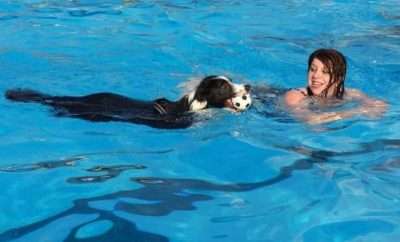
How To Choose The Right Indoor Swimming Pool For Your Kids
How To Choose The Right Indoor Swimming Pool For Your Kids
Have you decided to register your kid’s name in indoor swimming classes? Well, that is great!
In between the chaos of first swimming class preparation, finding the right type of academy is a priority. It’s an exciting as well as a little complicated process to find the best indoor pool.
For indoor kids’ swimming lessons in Singapore, the guardian needs proper planning. It includes ensuring water hygiene, safety, and cleaning practices by cleaners.
We have created a guide, consisting of the important points that you should keep in mind when choosing an indoor swimming pool for kids. Take a look! These are the essential tips on how to choose the right indoor swimming pool for kids.
Before you register your child to a swimming academy, ensure that it is the right one. You need to check, whether the pool is safe, or not. How? To know more, read on.
1. Covered To Defeat Weather Interruptions
You might be already aware of problems in an outdoor swimming pool. One of them is that it affects regular kids’ swimming lessons when the weather is not in favour. So, ensure the indoor swimming pool you have chosen is covered from all four sides and the ceiling.
Furthermore, in regions like Singapore, rainfall may occur at any time. But, it should not affect the regular swimming classes. An indoor swimming pool with five side coverage can help you out. Ensure that the pool you have chosen is covered, so your kids can swim anytime, which means all-year round.
2. Proper Ventilation Arrangements
For the safety of your kids, ask the swimming academy’s authority about ventilation. Well, it is the most important thing to consider as a parent. Make sure that the pool is safe for children.
The indoor pools need to be shocked for one time in seven days. It is because cleaners add chlorine to kill any bacteria and algae in the pool. Due to this, when a pool is shocked it leads to oxidation. So, the particles of body oils, lotions, perfumes, and grease are released into the air to form gasses.
In an outdoor pool, these gasses escape into the air. But in an indoor pool, the gasses usually hit the ceiling and then bounce back to the swimming pool. All of these lead to the degrading of water and air quality.
So, for combatting oxidation issues, ventilation is necessary for an indoor pool. Check if there are any fans or windows in the indoor space for proper ventilation. Also, in the winter months, the windows should be opened after shocking the pool. It will allow gasses to escape outside. Save your kids from harmful gasses and enrol their name in the best swimming school in your area.
3. Consider Swimming Pool’s Temperature
Regulating the temperature of the indoor swimming pool is one most important components to consider.
Do you know that indoor pools trap moisture and condensation very easily? And it gives rise to mould build-up, but ventilation is the perfect solution to prevent condensation. However, you need to find the root cause and solution to the problem.
Here the solution is, to keep the temperature of the swimming area at least two or four degrees warmer than your pool. It helps to combat condensation in an effective manner. Moreover, if the water and air temperatures are the same, there would be fewer chances of condensation.
Also, while requesting the regulation of temperature, you can ask the pool cleaning authorities to cover it in the off-hours. When a swimming pool is covered, there will be fewer chances for evaporation, which means less amount of moisture in the air. It is said that indoor pools lead to humidity increased humidity. But, if the swimming academy follows the right practices, then there would be fewer issues.
4. Regular Cleaning
While searching for an indoor swimming school in Singapore or nearby, keep the cleaning factor in your mind. The pools should be thoroughly cleaned and they must have a staff to look after the area.
Like other pools or artificial water bodies, indoor pools also need constant cleaning. This helps to prevent algae build-up and remove bacteria from the water. It means the swimming pool is clean and safe for kids.
Tips For Cleaning An Indoor Pool
Well, before instructing someone, you must know the process of cleaning the swimming pool. Have a look over the important steps of cleaning a pool:
Step 1:
The very first thing is skimming the pool with the help of a pool net. It helps to remove the floating debris.
Step 2:
Now, add chlorine for increasing the level from 8 ppm to 15 ppm. It will help to clean the pool and kill algae or other organic matter.
Step 3:
Brushing the floor and walls helps with cleaning the swimming pool.
Step 4:
The most effective method is connecting a pool vacuum. It ensures that all debris or dirt is cleaned well.
Step 5:
Use a pool filter for cleaning. First turn on the pool filter and cleaners need to leave it for 2 days.
Step 6:
Before starting any swimming class, check if the water and chemicals are balanced or not. Ensure that chlorine is 1 ppm to 5 ppm, pH 7.2 to 7.6, also the stabilizer should be 30 ppm to 50 ppm.
Step 7:
A pool cover is the best way to protect an indoor area when it is not in use. It protects the swimming pool from rotten leaves, dust, and pollen.
You can ask the cleaner what method they follow to clean the pool. And then, decide if it is right or wrong. With the steps listed above, you might have got a clear idea of cleaning.
Final Words
Most indoor swimming pools need maintenance on a regular basis. Also, daily water testing, weekly testing, and cleanliness are important. Make sure the authorities of the swimming academy are aware of pool cleaning and other aspects.














